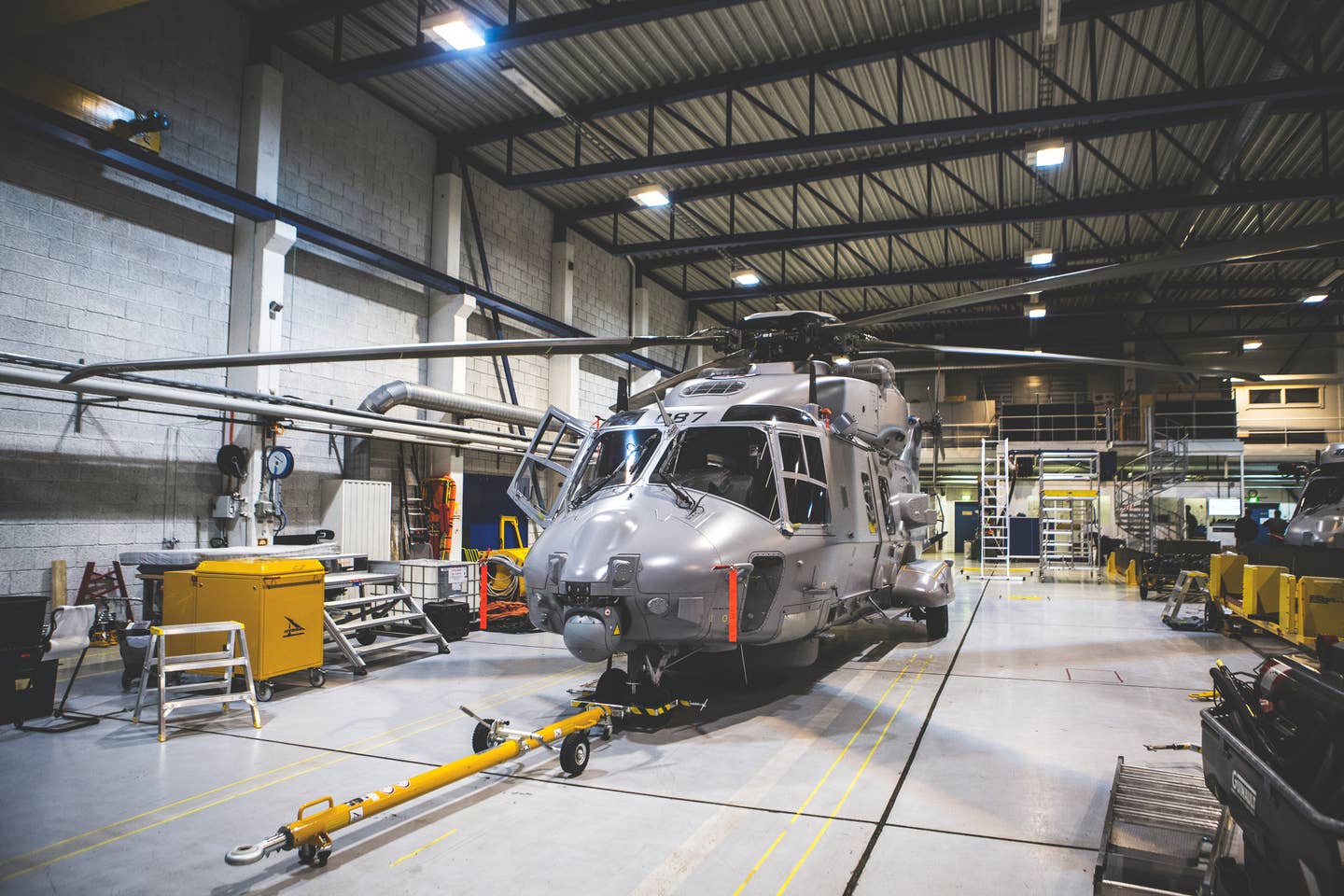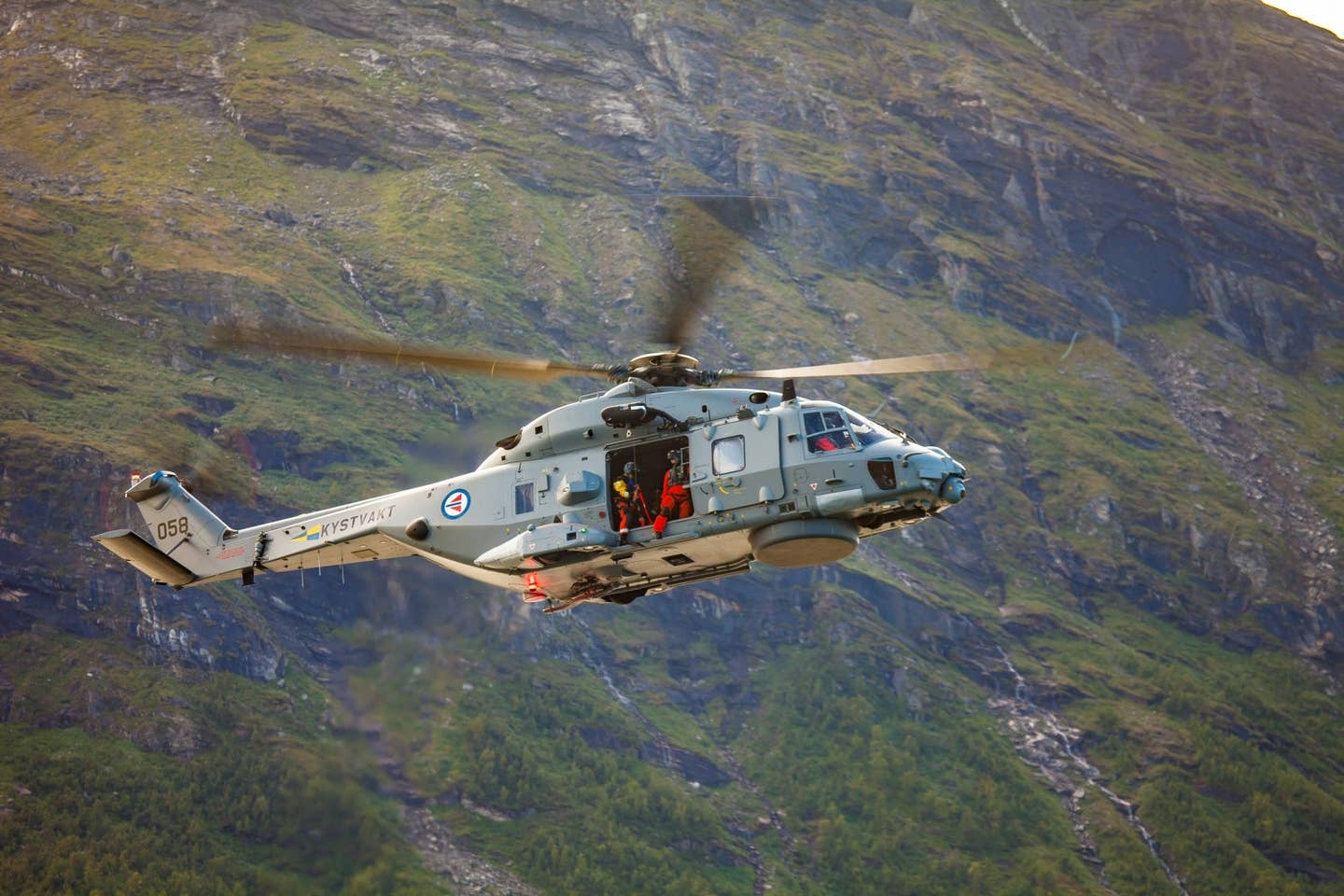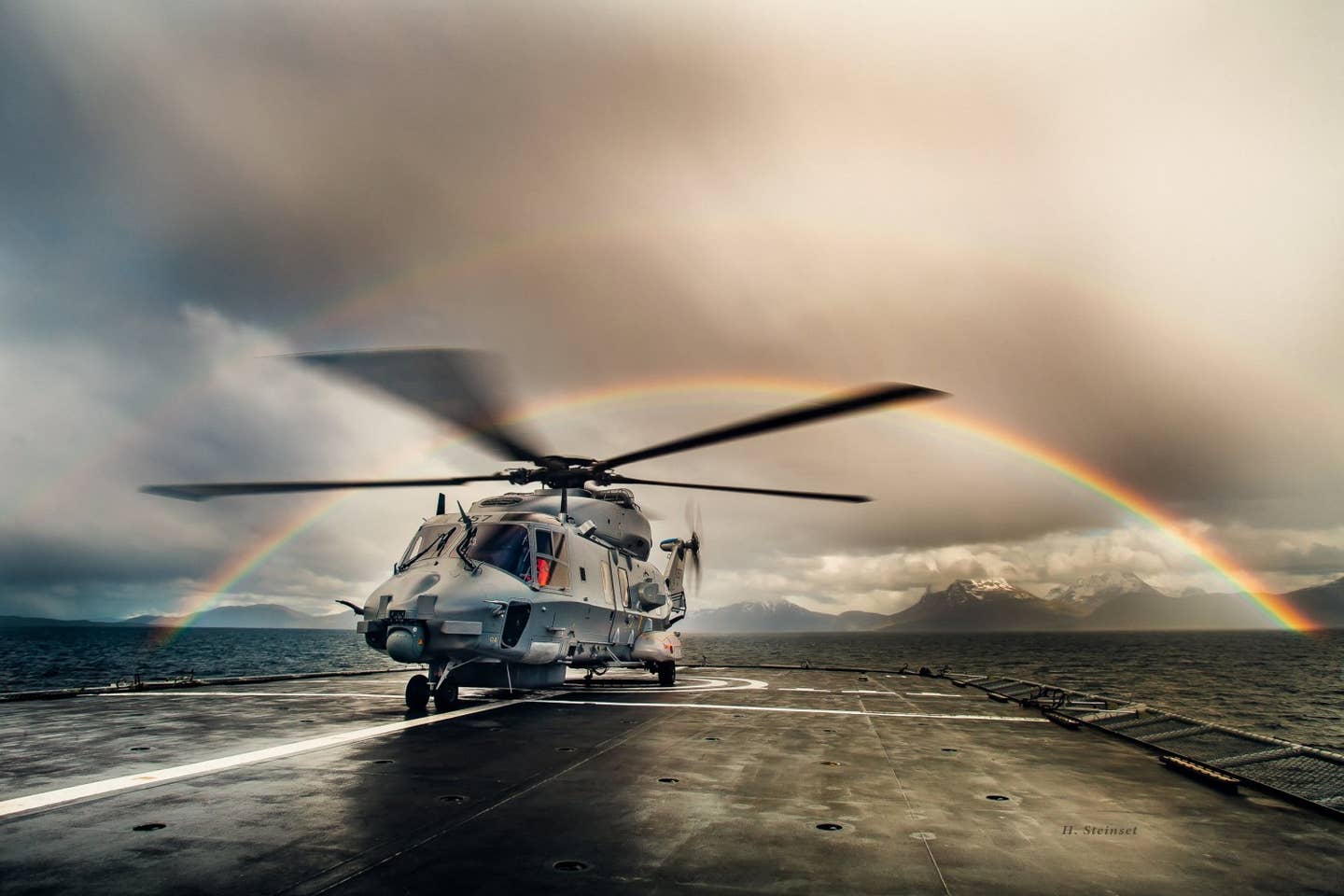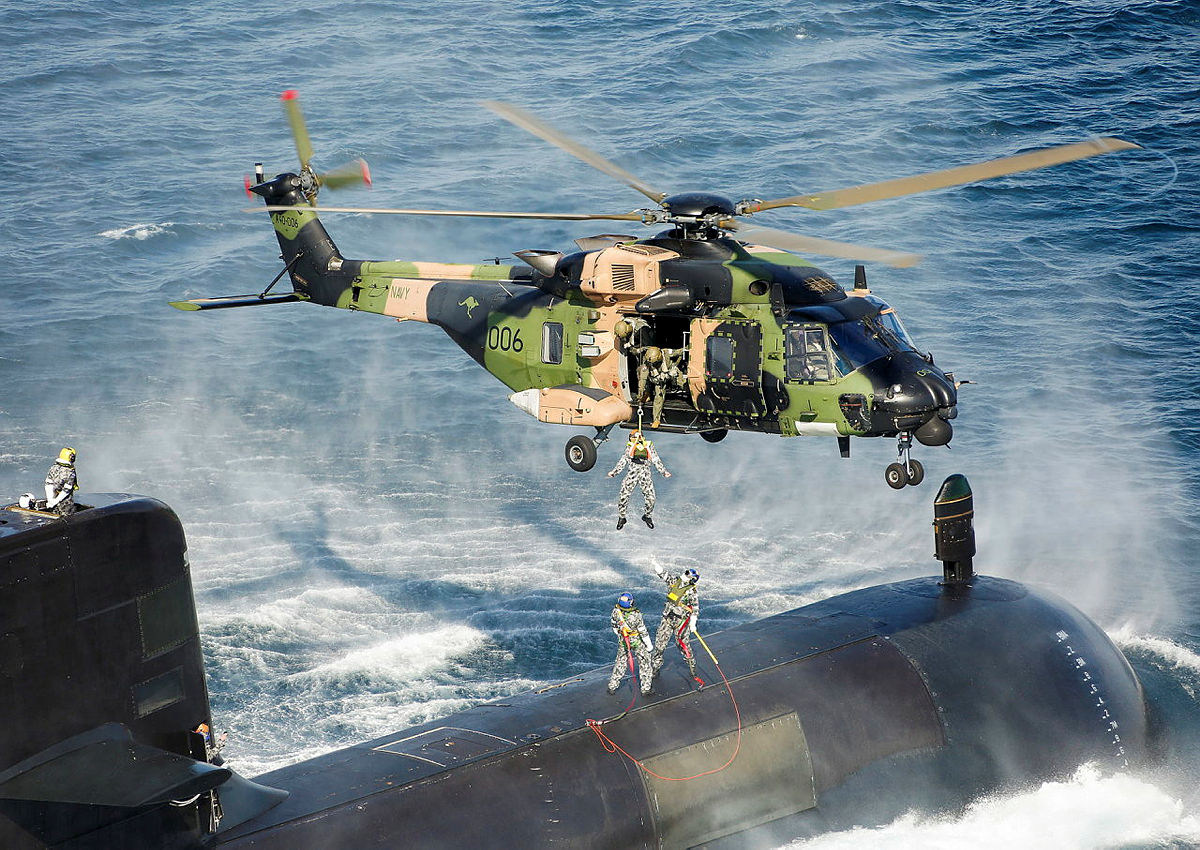Norway has terminated its two-decade-old contract with an Airbus-led consortium of European aircraft and defense manufacturers, NATO Helicopter Industries (NHI), to acquire 14 NH90 medium-lift helicopters, citing 20 years of frustration with the delays, errors, and time-consuming maintenance.
China’s “Path-Breaking” Plan: Will Launch 1st-Ever, Space-Based ‘Solar Power Station’ That Will Transmit Electricity To Earth
“Regrettably we have reached the conclusion that no matter how many hours our technicians work, and how many parts we order, it will never make the NH90 capable of meeting the requirements of the Norwegian Armed Forces,” said Norwegian Minister of Defence, Bjørn Arild Gram, in a statement released on June 10.
“Based on a joint recommendation by the Armed Forces and associated departments and agencies, the Norwegian Government has therefore decided to end the introduction of the NH90 and has authorized the Norwegian Defence Material Agency to terminate the contract.”
In addition to that, the Norwegian government also wants back the $500 million it paid NHI for the 13 helicopters in its fleet, in addition to interest and other expenses.

Norway had signed the initial contract for 14 NH90s in 2001, 8 for the coast guard and 6 for anti-submarine warfare duties aboard the Fridtjof Nansen-class frigates. They were supposed to replace the Westland Lynx in anti-submarine warfare, utility, search-and-rescue, and other maritime missions.
The helicopters were originally slated for delivery by the end of 2008, however, only eight have been delivered so far in a fully operational configuration and even they are not able to perform the missions for which they were bought.
The fleet is currently required to provide 3900 flight hours annually but in recent years it has averaged only about 700 hours.

“We have made repeated attempts at resolving the problems related to the NH90 in cooperation with NHI, but more than 20 years after the contract was signed, we still don’t have helicopters capable of performing the missions for which they were bought, and without NHI being able to present us with any realistic solutions,” said Gro Jære, Director General of the Norwegian Defence Materiel Agency.
The helicopter was developed in the mid-1990s by NHI, a partnership between European companies Airbus Helicopters, Leonardo Helicopters and Fokker Technologies based in Aix-en-Provence, France.
The aircraft is used by a total of 14 countries, including Australia, Belgium, Finland, France, Germany, Greece, Italy, the Netherlands, New Zealand, Oman, Qatar, Spain, and Sweden.
In an interesting coincidence, the Qatar Emiri Air Force accepted its fifth NH90 on the same day Norway ditched its entire NH90 fleet.
The Qatar Emiri Air Force has recently accepted its 5th #NH90. This latest acceptance confirms the excellent relationship with the Customer. In 6 months, 3 naval ? assembled at @LDO_Helicopters in Italy & 2 TTH ? from @AirbusHeli in France have been delivered. pic.twitter.com/tTxMiA8mDn
— NHIndustries (@NHIndustriesSAS) June 10, 2022
The helicopter was designed to provide European NATO countries with a standard, and interoperable multi-role rotorcraft for the purposes of coastal patrol, anti-submarine warfare, search-and-rescue, and utility operations.
So far, 471 NH90s have been reportedly delivered by NHI to its customers, and the global fleet is known to have flown just over 327,000 hours.
NHI Disappointed By Norway’s Decision
Meanwhile, NHI said it is “extremely disappointed” by Norway’s decision and “refutes the allegations being made against the NH90 as well as the company.” The company also questioned the legality of Norway’s termination of the NH90 contract but did not explicitly threaten legal action.
NHI said it was not offered the possibility to discuss a proposal to improve the availability of the NH90 in Norway or to address Norway’s requirements.
“The NH90’s inherent characteristics offer any armed forces with an advanced, fully integrated mission capability, survivability, speed, range of action, discretion as well as night and all-weather operations without equal in the world in its category. In its naval configuration, it is an incomparable asset to answer the needs of Norwegian Armed Forces, allowing the most advanced surveillance capabilities in the North Sea, just as the NH90 is doing elsewhere across Europe at sea protecting nations,” NHI said in a June 10 statement.

“NHIndustries and its partner companies are and have continuously been absolutely committed to addressing the concerns previously expressed and have brought the appropriate and tailored solutions to the table to meet the specific and unique Norwegian requirements.
With 13 helicopters delivered out of 14 and the fourteenth ready for acceptance, we were close to finalizing the main scope of the initial contract.”
While the Norwegian Defence Ministry said that it will begin the process of identifying an alternative maritime helicopter, which according to reports will probably include the Sikorsky MH-60 Seahawk helicopters.
Incidentally, the Seahawk was also involved in an accident, this week only.
Australia Had Also Grounded Its NH90s
Norway is not the only country that has struggled with the NH90s. In December, Australia also announced that it is grounding its fleet of MRH90 battlefield utility helicopters, a variant of the NH90 also known locally as the Taipan, citing similar difficulties with maintenance and availability.
“The performance of the MRH90 Taipan has been an ongoing and well-documented concern for [the Australian Ministry of Defense], and there has been a significant effort at great expense to try to remediate those issues,” Australian Minister for Defense Peter Dutton said in December.

The MRH90 Taipan entered Australian service in 2008, and the fleet of 46 Taipans will now be retired a decade ahead of schedule to be replaced with 40 American-built UH-60 Black Hawks.
Airbus Fears US Firms
Airbus is said to have expressed concern that US military rotorcraft manufacturers will take over the market once the US Army’s new Future Vertical Lift family of advanced rotorcraft is introduced in the 2030s.
The European NATO members will also be looking for next-generation rotorcraft (NGRC) to replace about 1000 medium-lift helicopters scheduled for retirement by 2040. Those countries face a choice between joining the US’ Future Long-Range Assault Aircraft (FLRAA) program or building their own competing design just like they did with the NH90.
That said, it does not bode well for NHI that two of its customers have ditched their NH90 fleets ahead of schedule, citing similar difficulties.
If the European company’s customer base continues to collapse, it could pave the way for European militaries to turn toward the US when the time comes for modernization of their rotorcraft fleets.
- Contact the author at tanmaykadam700@gmail.com
- Follow EurAsian Times on Google News




